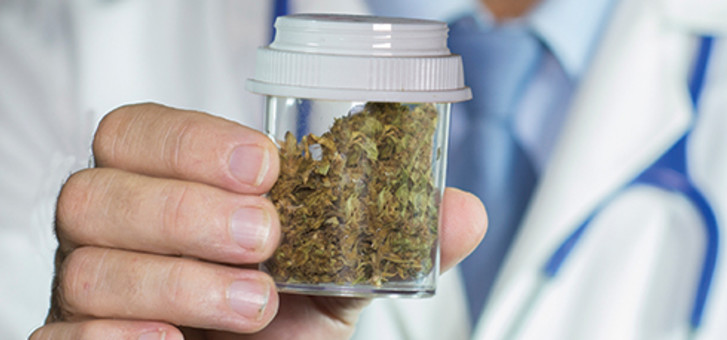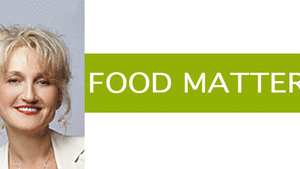Adventists have always taken a stand against drugs—from legal and widely available substances like caffeine, tobacco and alcohol to pills, powders and potions prohibited by law. Yet many medications we use contain opiates, steroids and other illicit drugs that have been harnessed to heal. As an increasing push is made to legalise medical cannabis, many Adventists either agree or are agnostic. But do we know the full truth?
Medical cannabis has been legal on prescription from Australian general practitioners for the past 18 years. Curiously the Australian media keeps singing the same tune—that state and federal governments must work together to legalise cannabis for medical purposes.
In my voluntary work for Australia’s peak drug prevention organisation, Drug Free Australia, I have seen a dozen media releases, letters and various opinion pieces sent to all major newspapers and television stations around Australia, alerting them to the fact that medical marijuana has long been legal. Not one has made it to press and only Channel 7 has given a few seconds of national coverage to Drug Free Australia’s information. It seems Australia’s major media organisations have an editorial policy designed to suppress any information on the true current legal status of medical cannabis. In June 2014, Drug Free Australia informed all 900 or so federal, state and territory politicians in writing of the legality of medical cannabis. Yet the debate rages on.
Clinical trials of smoked cannabis began in 1974, to gauge its effectiveness in treating a range of medical conditions. Some of these results, since 1984, have been compared to Marinol, a synthetic tetrahydrocannabinol (THC) pill, the effect of which lasts twice as long as smoked cannabis but has a slower onset. Of the many conditions for which cannabis was claimed to be effective, only five—nausea, AIDS wasting, chronic pain, multiple sclerosis (MS), spasticity and epilepsy—have recorded measurable but usually mild effects. In the case of chronic pain, cannabis is roughly as strong as codeine but can be effective for patients who do not respond well to opiates. Many of the other claimed benefits of cannabis have evaporated under the rigour of clinical trials. It's not unusual to find that certain conditions that appear alleviated by its use are actually caused by cannabis as part of a well-documented withdrawal syndrome.
In Australia, Marinol has been legally available on prescription since 1997, through special access arrangements with the Australian Therapeutic Goods Administration (TGA), the regulator of all medical treatments in this country. In 2012, a whole-plant extract of cannabis marketed as an oral spray, called Sativex, was approved by the TGA for MS. It can also be prescribed under special access for conditions where there is evidence that cannabis has a demonstrated effect. Sativex is no longer directly sold by Australian pharmacies due to a lack of uptake by MS patients (but is still available). The cost of buying these medications is no more expensive than purchasing cannabis of comparable dosage from a drug dealer, on average about $A500 per month.
In 2014, significant publicity was given to the effect of cannabis on Dravet syndrome and Lennox-Gastaut syndrome, which both cause severe epilepsy-like seizures, particularly in young children. Some children have been helped by the use of cannabis strains high in cannabidiol or CBD, a constituent of cannabis that is not psychoactive as is THC. The manufacturer of Sativex, GW Pharmaceuticals, has already completed first stage clinical trials of Epidiolex, which like Marinol and Sativex, is a pharmaceutical-quality medication with standardised dosage, strength and purity, but with high levels of CBD. Epidiolex is fairly freely available in the US for trials, and Drug Free Australia has recommended that the TGA approve its use here for trials also.
So why is the media, along with the ACT and Victorian governments, calling for medical cannabis to be legalised, when it is already legal? The answer is simple. In the US, where states hold referendums on various legislative issues at the time of each federal election, the cannabis legalisation lobby has a fighting-fund 25 times greater than the anti-cannabis lobby. Some of the world’s richest men such as George Soros (who spends up to half a billion dollars annually on his social liberalism agendas) heavily fund these referendums on legalising cannabis, firstly for medical purposes and then for outright recreational use as has now happened in a number of US states. Repeated TV advertising shows sick people claiming on-camera their dire need to access medical marijuana. And more than 20 states have voted to legalise it.
What the US public is not told, and the prevention lobby doesn’t have enough money to tell them with any penetration, is that 95 per cent of medical marijuana "patients" are previous recreational users, according to US Institute of Medicine surveys from the late 1990s. They are not told that cannabis has only a handful of conditions it alleviates and almost all of these have far more effective medications available. They are not told that cannabis actually causes the chronic back pain that many claim it alleviates, as part of its own withdrawal syndrome, along with other maladies arising from its use.
Effectively, US states have allowed popular vote based on emotive advertising to determine what is a medicine, rather than the scientific regulatory processes applied to every other available medicine. This has led to tens of thousands of people claiming to have maladies that cannabis alleviates, so they can grown their own. In Nevada, 93 per cent of these claimed maladies cannot be objectively verified by a doctor and must be accepted on faith.
In Australia, where no such referendums are held, the pathway to legalisation is not so easily bought. In 2012, the Australia21 forum, with influential Australians such as Bob Carr and Nicholas Cowdery, began agitating in the media for the legalisation of all drugs—heroin, cocaine, speed, ice, ecstasy and cannabis—with the televised media giving them plenty of airplay, albeit fairly, with Drug Free Australia brought in to debate the issue on air. By contrast the Sydney Morning Herald held a public debate at Sydney University where five drug legalisation advocates were pitted against a single prevention advocate.
With the failure of that push by 2013, Australia21 operatives looked for a new pathway to legalising drugs and found it in young NSW cancer patient Dan Haslam (tragically now deceased), who publicised his need to smoke cannabis to alleviate chemotherapy-induced nausea. And it's precisely this that the advocates are fighting for—not medical cannabis per se but for crude non-pharmaceutical cannabis products they hope will not be regulated by the TGA—all for the end-game it seems of getting home-grown cannabis made available to all, as it is in the US. In November 2014, a number of federal senators introduced legislation to remove the control of medical cannabis from TGA strictures.
In the ACT, a Greens proposal to legalise medical cannabis specifically states that Sativex is not part of their plan, despite Sativex delivering all the same cannabinoids via a safer and faster-acting delivery system than hash cookies, bongs or crude cannabis oils. Their parliamentary bill seeks to legalise home-grown cannabis, with up to nine cannabis plants being considered a non-trafficable quantity under the ACT Criminal Code. What they fail to tell the public is that a single cannabis plant can produce five crops a year with a total 2500 grams, enough to make 8600 joints. With the average medical cannabis patient in the US requiring 1.5 grams per day or 550 grams per year, one plant provides five times the needed quantity, which in the US has provided too much temptation for patients who could use extra cash.
This is precisely where the US medical marijuana legislations fail. In Colorado, which has allowed six plants per patient since 2009, 74 per cent of teenagers surveyed entering rehabilitation for cannabis addiction reported that they sourced cannabis from medical marijuana patients. This issue is the most dangerous aspect of the current push for crude cannabis, considering the damage done to a teenager's developing brain. A recent Lancet study has found that daily users of strong forms of cannabis have a five times greater risk of developing psychoses, such as schizophrenia.
These are the stakes. According to the 2013 National Drug Strategy survey of around 24,000 Australians, 91 per cent do not give their approval to the regular use of cannabis, yet 69 per cent support the legality of medical cannabis. Australians don’t want more drug use but there are forces seeking greater availability of drugs.
It’s a shame that virtually no Australians know what is really behind the current medical marijuana push and that it has been legal here for years.
Drug Free Australia, along with the Australian Medical Association, made a submission to the ACT medical marijuana inquiry opposing the bill. On August 13 the bill was rejected by the Legislative Assembly
Gary Christian is research coordinator for Drug Free Australia.






